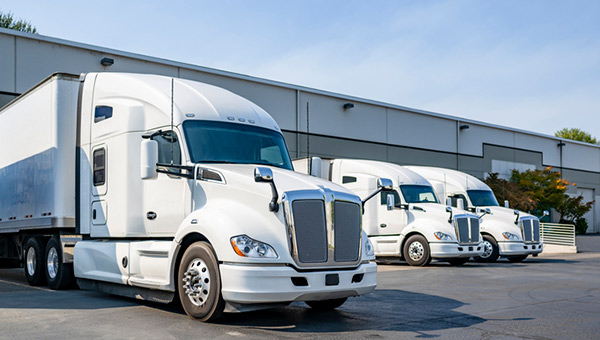Big-Rig Charging Plan Leaves Big Question: Who Will Pay?
A new federal initiative aims to speed up and better coordinate the rollout of charging and refueling stations for zero-emission big rigs. Industry officials say questions over how much the buildout will cost or who will pick up the tab still need to be resolved.
The Biden administration this week released the strategy laying out where and when battery-electric charging and hydrogen refueling infrastructure will be needed to support a new generation of truck fleets. Administration officials foresee the infrastructure growing rapidly at first around major freight hubs, then expanding into a national fueling network by 2040.
Trucking and charging-provider executives say the phased strategy will help as they plan the needed infrastructure and should help local governments and utilities prioritize investments.
But some industry groups say the strategy lacks crucial details needed to bring certainty to operators looking to transition their fleets. “The next thing that needs to come out of this is who’s going to pay for all of this?” said Jacqueline Gelb, vice president of energy and environmental affairs at the American Trucking Associations trade group. “It’s the big question sitting at the back of everyone’s minds.”
Trucking executives say the lack of charging infrastructure remains a major concern for carriers as they weigh how to roll out zero-emissions trucks.
That has been evident in California, the most aggressive state in the country so far in mandating a transition to zero-emission big rigs. But many truckers are reluctant to make the leap because of a lack of power. Refueling stations for hydrogen-powered trucks are starting to launch this year and publicly-accessible battery-electric charging stations are still rare.
Because battery-electric trucks take several hours to charge, carriers prefer to have the charging infrastructure in their yards. But the stations are expensive to install and some truckers have faced permitting holdups and shortages of critical components such as transformers, switchgear and electrical steel.
Dawn Fenton, vice president of government relations and public affairs at Volvo Group North America, said some carriers have delayed zero-emission truck orders because they couldn’t get chargers in place.
“Funding is one problem, but it’s not the only problem,” Fenton said. “It’s coordinating with local governments. It’s the utilities’ ability to build out capacity before the demand is there. The way utilities invest in the grid. There are a lot of factors at play here.”
Administration officials say the strategy will help electricity companies plan transmission and energy-capacity needs and hydrogen-technology companies plot where to site hydrogen production and refueling depots. They say the strategy can also be used by federal and local governments to prioritize grants and loans.
They add that government funding for zero-emission infrastructure is available through programs made possible by the $1 trillion infrastructure law and the Inflation Reduction Act, but that the strategy document should also help facilitate private-sector funding.
“Our goal is to supplement, not supplant, that investment, and to really serve as a catalyst for what we view as an economic and climate imperative,” said Gabe Klein, executive director of the Joint Office of Energy and Transportation, which oversaw the strategy.
Patrick Macdonald-King, the chief executive of Greenlane, a joint venture between Daimler Truck North America, NextEra Energy Resources and BlackRock that is building public heavy-duty charging sites, said Greenlane is already targeting the trucking corridors highlighted by the report.
“The value-add for us is the participation [of the federal government] and actually having federal policy to support this, especially during the course of the next two, three, four years even,” he said.
